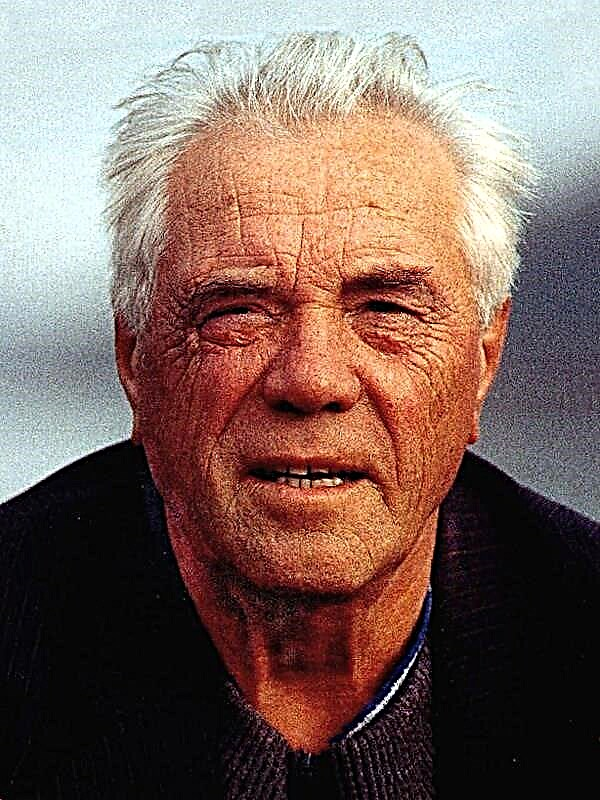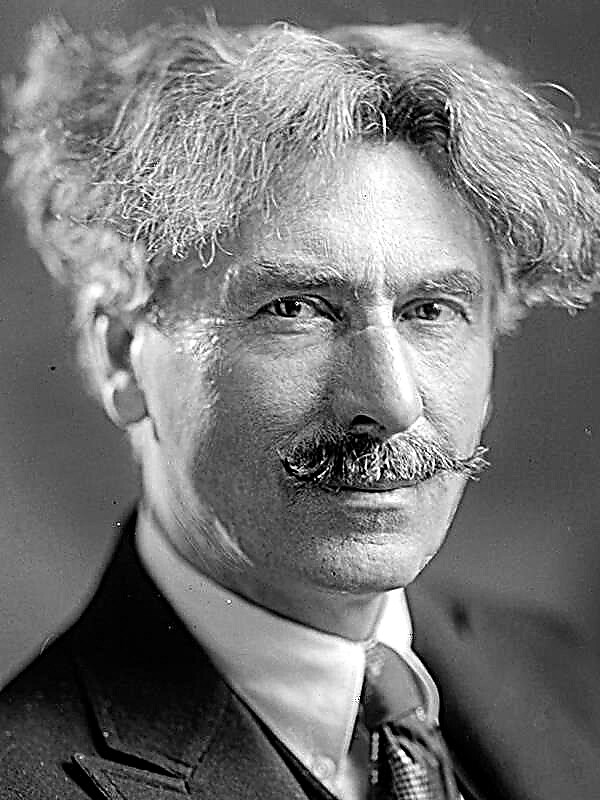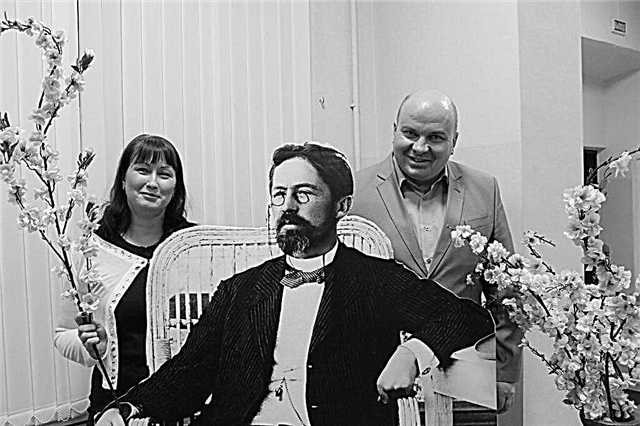In literature lessons, in conversations with intelligent people, in excursions and lectures, we can hear about romanticism, the art of the Renaissance, and clearly understand what is being said. However, when the topic of modernism pops up, questions willy-nilly arise, because this is one of the most difficult and significant eras. In order for you to really be able to understand this topic, it is necessary to disclose the concept of modernism, which is what the Literaguru team does.
History of occurrence
By the end of the XIX century, when realism had taken root and even managed to get bored, the wind of change began to blow ... and experiments. Modernists claiming a new era proudly step onto the red carpet. The triumph of modernism came at the beginning of the twentieth century, and it was then that literature, radically different from past times, and, along with it, music and fine art began.
The origins of modernism stem from the desire to do something new, so the story of the form, not the content, is told. The culture of modernism originates in the 60s of the nineteenth century. Then the impressionists reign in painting, and in literature German romantics reigning in escapism and the cult of the irrational principle. The plot ended in antiquity, did not stop the same culture? And thanks to modernism, culture is transforming and becoming completely unrecognizable for those times.
It's no secret that everything new is not immediately perceived with enthusiasm, modernism is no exception. However, representatives mastered the technique differently, because this phenomenon is a combination of the phenomena of avant-garde culture. The development of modernism was rapid, exciting, it would seem, all around.
The history of this cultural phenomenon comes from the desire to improve art, because the world does not stand still. Global changes are taking place in life: instead of the clatter of the hooves of horses in the streets, motors are heard, which indicates great progress. In addition, one of the main sources of modernism is the global revaluation of values due to the First World War. Did you say that a person is beautiful? But chemical weapons and war prove that life alone does not mean anything. As a result of this, a new art is being created. It a priori could not remain the same, and rapid changes came in the face of the modernists. This was the beginning of the development of such a cultural revolution - terrible, indescribable things were happening in life. Modernists took on the task of not only describing all this, but also proving that art can be completely different, therefore the rejection of all authorities is typical of this cultural direction.
Essence
The onset of the era of modernism was so loud and bright that no one could not notice such changes. This was expressed in art, in life and in man himself. Ceasing to torment you, we will tell you about the idea of modernism, and why so much attention is paid to this era.
The idea of modernism consisted, as already mentioned, of a desire to experiment. Due to the global changes taking place in life, art has also undergone major changes, and if earlier people were read by Shakespeare and believed in his ideals, then modernists are turning away from what was said before. Something was done more to shock, however, the statements of the same futurists were quite loud. The main idea of modernism is not to do as it was before, so representatives of the new era developed the form of a work of art.
The whole characteristic of modernism lies in aesthetic rebellion, it is a kind of updating of art. To create something that did not exist before, and that would reflect the situation of the new world.
In modernism, much more attention is paid to man. Both the author and the reader are on a new level. We repeat, if a person in art used to chant, it was said that he is god-like, then from now on, against the background of all the shocking events, everything is different. Therefore, even the author “dies”, as Roland Bart said: this meant that now in the book we do not see the author’s comments, this right is transferred to the reader. Interactive literature is in fashion, where the reader is recreated in his rights.
Any era sang certain positions, if in the Middle Ages it was a church, in sentimentalism it was feelings, then the concept of modernism consists in experimenting and manifesting the same global changes.
Signs
In 19th-century literature, did the author seem to take you by the handle? Forget it. From now on, you are immersed in a modernist text, where you will recognize the characters in the same way as in life. Yes, interest in such a book may not arise immediately, but, alas, you need to get used to it: you need to give a chance to your liberated imagination, show patience and tolerance, in which case the text will completely cover you.
Form becomes the main component: not history is important, but how it is presented. One of the main signs of modernism is a bizarre experimental form.
Also an important sign of the era of modernism is the concept of "absurdity." The same theater of the absurd - all this was done with the aim of destroying traditional ideas about art, and preparing something new. You do not need to take it with a negative, on the contrary, the modernists only shout to you that you need not to stay in one place and not be afraid of changes.
Principles
Not only is the form, not the content, important to us, so also the interest is shown not in events, but in feelings. No, this is not sentimentalism; modernism has a different principle: to practically reveal the inner world of the hero. It becomes interesting how the character feels in a certain situation.
In addition, in the literature of modernism you do not often meet normal heroes. The demented, physically inferior heroes and maniacs enter the art scene. The attention to human pathology is increasing. Also, not all modernist works will pamper you with a happy end, it also serves as a kind of allegory of the tragedy of modern man.
The modernist is a lover of experimentation. But also expect underestimation, veiledness, intellectual reading and the principle of diffused meaning. Modernism, of course, is the brightest era that has something to boast about.
Currents and Directions
Modernism consists of many currents, because this is such a diverse and global era. The main areas are futurism, expressionism, impressionism, surrealism, Fauvism, Dada, Cubism, abstractionism, and many more "isms" that create a portrait of the avant-garde.
Do not forget about another form of modernism - symbolism. However, this trend should not be attributed to avant-garde culture, as this is an update only of art, and not the views of a potential audience.
Each direction is unique and bright, thanks to which modernism is transformed and becomes like a colorful Christmas tree, where each toy is a masterpiece of the era.
Features
If earlier art developed in a certain direction, then with the advent of the era of modernism, it spread along different paths. Each stream has its own rules and methods, but the general is still there - a craving for experiment. This feature is manifested in all types of art of modernism.
A distinctive feature, for example, of surrealism is the identification of the unconscious, and futurism - attracting attention to a new life through shocking and rejection of the old. All this demonstrates what the art of modernism was like, but it’s best to be convinced of this in practice.
In literature
So, how is modernism expressed on the pages of books? It was said above that in surrealism it is an expression of the unconscious. It turns out that the author must express his soul without the participation of the head, but is it possible in this state that someone is able to write at least something? It turns out yes. The literary device “stream of consciousness”, transmitting the flow of thought, becomes relevant. There is real chaos in our heads, and in real life we don’t think like the great writers put it. We think without dots and commas, with one thought we jump to another, and in this way a certain cohesion of associations comes out. The same was new literature. Reading it is not easy, but it is true and true reading. Writers could specifically abuse alcohol, so that in a state where the mind can no longer be dominant over you, write a few lines. Literature becomes like a dream or an overly rich imagination, which makes it only more interesting. An equally important artistic device - “automatic writing” - is the dictation of thought beyond any control of the mind.
And how could they express the literature of the future in the era of modernism? If you think that the scene was only replaced by modern cities, then this is not enough. Futurists tried to transform literature as much as possible by introducing visual poetry - now poetry could be viewed rather than read. The most courageous representatives of modernism refused all that was familiar to us - rhymes, meanings of words, conjunctions and prepositions. Books were transformed beyond recognition and did not cease to arouse interest, so literary modernism fired most clearly.
Let us not dwell on such a radical genre of modernism - symbolism. In this current, nothing was taken literally, the lines were filled with encryption and images.
In painting
On the canvases, modernism resulted in different colors - bright and faded, and the images in the paintings could simply amaze. Artistic modernism was no less popular than literary. After the appearance of photography, artists had to prove that their work continues to live, so copying reality is not about modernism.
Such directions of painting as impressionism burst into the cultural world, where the essence of the painting was expressed in the impression of the artist. But further - more. What is only the opposite direction of impressionism - expressionism. The authors literally poured all their feelings and feelings onto the canvases, so each color is an emotion.
Modernist painting is brightly embodied in such areas as: cubism, filled with figures; Fauvism, thanks to which the viewer's eyes immediately cling to the brightest colors; and surrealism, where finding logic seems an unrealistic task.
In architecture
For the most vivid representation of the buildings of modernism, first imagine for comparison a model of classicism - some St. Isaac's Cathedral in St. Petersburg or the Bolshoi Theater in Moscow, and then try to imagine the opposite creation.
Architectural modernism also does not hesitate to violate standard rules, therefore, refuses to direct lines and even from some convenience. The main thing is unusual!
That is why, when passing by the Art Nouveau architecture building, you immediately pay attention to it, perhaps without even knowing what style it belongs to. But definitely, you cannot lose sight of it. For example, such is the building of the Kazan station in Moscow.
In music
Art is an extraordinary power, and if it is transformed, then in all areas. Music is no exception. It is interesting that in modernism the form is exceeded over the content, and if in literature, in painting, you can search for a plot, then the music is filled with the main feature of modernism. She did not know the plot, she had to listen and be able to enjoy the flow of notes, sometimes playing excitedly, then smoothly passing each other.
But music did not escape experiments. The city, modern at that time, could be reflected in the melody of modernism, because the composition can now be created from sound alone.
A vivid example is jazz, where improvisation became the basis, due to which each melody was unique.
Main features
In fact, each era, to one degree or another, has gained attention in art, but modernism looks farthest. This is not just unusual art. Life is changing rapidly, and art is not far behind. Priorities and values have changed, philosophers are about to rattle about the lack of a meaning in life, so creative people have no choice but to experiment.
After World War I, people read the literature of the lost generation, are indignant at the performances of the theater of the absurd, because this is yet another confirmation that life is sheer chaos.
However, form is form, but what did the representatives of modernism write about? The plot for them was, of course, secondary, but the majority still did not refuse it. It is best to study separately relevant topics of the era of modernism.
Topics
One of the pressing topics of modernism is, of course, war. An event shocking everyone. It describes the psychological state of a person in the war, and his life after. A man is forced to kill, and this could not but affect the pages of books. The reader considers the heroes as people lost, not knowing how to live, doubting the main values of life - love and faith.
The holiday of life and the destruction of the American dream were also emphasized in contrast with the war. The desire to live, because it is not known when life ends, is both pompous and scary. In literature, the concept of a lost generation has become the leading theme of modernism.
An important problem in any era is the meaning of life. However, this bad luck, modernism gives rise to a new philosophy, declaring that there is no sense at all. Art is trying to find answers to these questions while existentialists occupy a pedestal.
Emotions and madness are another topic of modernism, both for literature and for painting. In such rapid changes, any person will be lost, normal heroes in the past. Important questions are raised about who is who in modern society and the role of each person.
And, of course, modernism also claims the power of art that it can help to survive in such an extraordinary world.
Style
Each author has his own method, due to which we extol their work. The aesthetics of modernism is embodied, first of all, in the details behind which entire histories are hidden. That is exactly what the modernist writer Ernest Hemingway wrote, for example.
Art brings out unbound febrile delirium. This is expressed not only in surrealistic painting, but also in literature. Imagine that while you sleep and are immersed in an unusual dream, your hand is writing down something unconsciously. This was the style of another representative of modernism.
Futurists, for example, loudly abandoned previous authorities and "dropped classics from the ship of modernity." Their shocking cry was accompanied by extraordinary tricks: the lack of punctuation marks, underlining of the main words, even the font. However, in fact, the futurists are still romantics, and could talk about love no less beautifully than the classics.
Representatives
Finally, after we figured out what kind of era it is, it is best to dwell on representatives. In theory, modernism is beautiful and unusual, but in practice it is revealed much brighter, therefore, as they say, these heroes must be known in person.
In literature
Let's start with the writers of modernism - representatives who have expressed a new era in the pages.
- James Joyce The Irish writer is one of the most prominent representatives of modernist culture, who presented us with very difficult works. His experiments were successful, and now anyone who wants to feel the influence of modernism can try to master his work.
- Paul Verlaine is a modernist embodied in symbolism. The poet who exalted the form and musicality of the verse.
- Arthur Rimbaud is a symbolist poet whose poetry will seem so unusual to you as if it were not written on earth at all.
- Oscar Wilde - Who Doesn't Know the Author of "Portrait of Dorian Gray"? Even in this novel, every word is not accidental. Another representative arguing that “how” is much more important than “what.”
- Guillaume Apollinaire. Another bright personality, subtly reacting to the world around him, and most importantly, able to express it in her poetry.
- Marcel Proust is a man without whom this list cannot do. Not a simple, but rather interesting writer, who also vividly expressed the era of modernism.
- Andre Breton is a representative of not only the era of modernism, but also of a specific direction - surrealism.
- Filippo Tommaso Marinetti is a futurist who recalled the art of Italy and introduces new rules.
- Ernest Hemingway, hiding in detail all his writing skills.
- Francis Scott Fitzgerald is another representative of both the literature of the lost generation and modernism.
- Erich Maria Remarque is a man who wrote about the war in such a way that it is read with interest even by female representatives.
- Franz Kafka is a man of difficult fate, who expressed all his experiences in his own modernist work.
- Jean-Paul Sartre is a modernist writer and existentialist philosopher.
- Eugene Ionesco is a playwright who gave us the theater of the absurd.
- Samuel Beckett - playwright, Irish writer.
- Albert Camus is another representative of modernism.
In painting
Going around the main directions of the era, we will call the main artists of modernism.
- Salvador Dali, recording his dreams in paintings.
- Pablo Picasso is an artist who tried to prove himself in more than one direction.
- Kazimir Malevich - a representative of abstract art.
- Vasily Kandinsky is an abstract artist.
- Van Gogh is an artist of post-impressionism, thanks to which the beginning of expressionism
- Paul Gauguin - a representative of post-impressionism, which laid the foundation for Fauvism.
- Henri Matisse is a representative of Fauvism.
- Edward Munch is an expressionist artist.
In architecture
Modernism has shown itself in all areas of art, so it was the turn to name the architects of modernism.
- Walter Gropius
- Alvar Aalto
- Gustave Eiffel
- Antonio Gaudi
- Le Corbusier
In music
Let us dwell on the composers of modernism for the most vivid picture.
- Claude Debussy
- Dmitry Shostakovich
- Richard Strauss
- Ferruccio Busoni
- John cage
Examples
Finally, having dealt with the representatives of modernism, we can go directly to their works, which became a reflection of the very controversial era.
In literature
- Ulysses, James Joyce
- “Towards Svan”, Marcel Proust
- “Poems Without Words,” Paul Verlaine
- Magnetic Fields, Andre Breton
- Fiesta, Ernest Hemingway
- The Great Gatsby, Fitzgerald
- “On the Western Front Without Change,” Erich Maria Remarque
- "Nausea," Jean-Paul Sartre
- Transformation, Franz Kafka
In painting
- “Music”, Matisse
- The Temptation of St. Anthony, Dali
- The Scream, Munch
- “The Girl in the Mirror,” Picasso
- The Black Square, Malevich
- Starry Night by Van Gogh
- Kiss, Klimt
In architecture
- Dancing House, Frank Gehry (Prague)
- Casa Batlló, Antonio Gaudi (Barcelona)
- Architecture of the city of Chandigarh, Le Corbusier
- Germany Exhibition Hall, Mies van der Rohe (Barcelona)
- Guggenheim Museum, Frank Lloyt Wright (New York)
In music
- Symphony No. 5, Shostakovich
- Romeo and Juliet, Prokofiev
- "4:33", Cage - even such an experiment has the right to be on our list
- The Firebird, Stravinsky

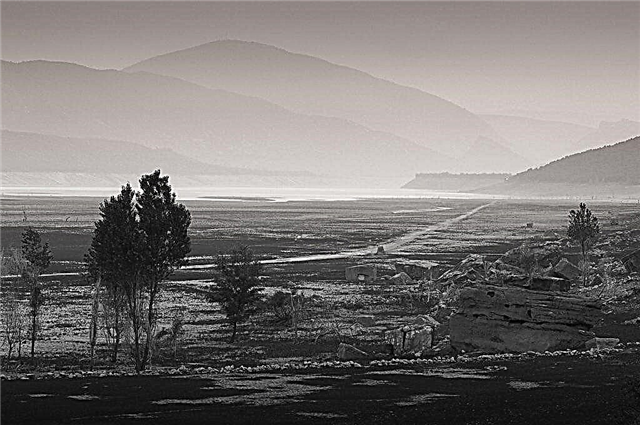

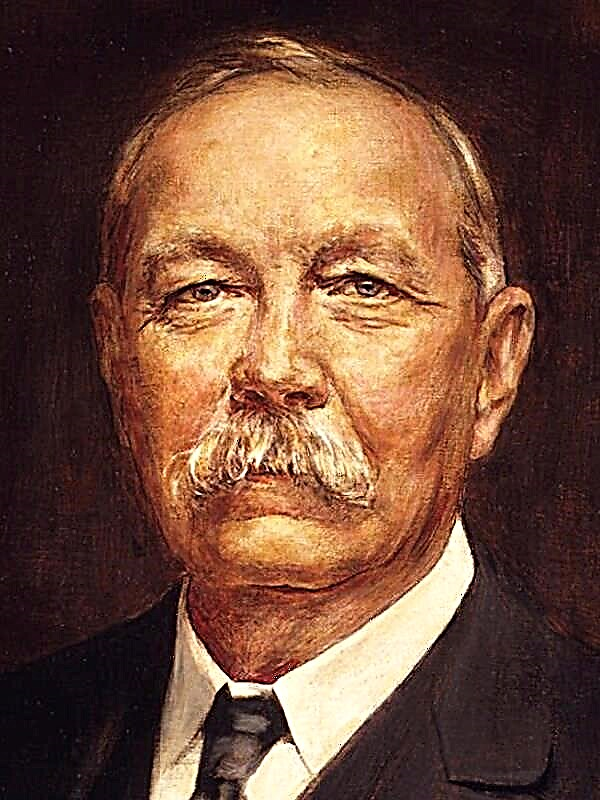


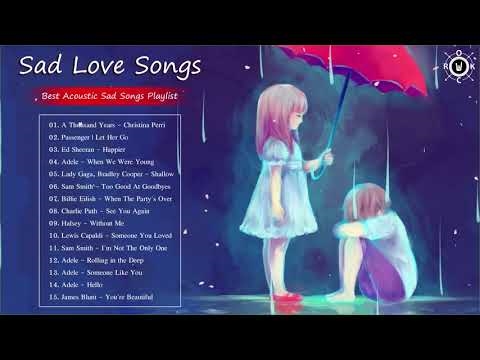

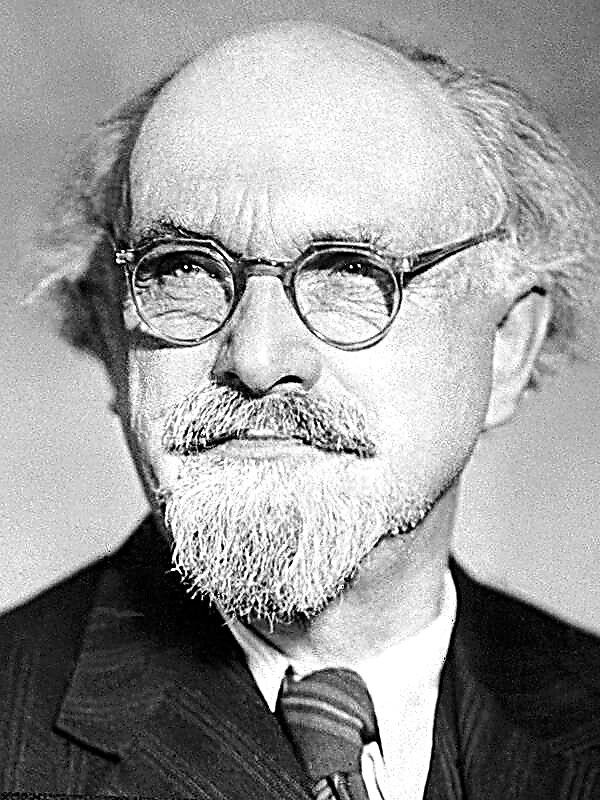 At the walls of the city of the invisible
At the walls of the city of the invisible
